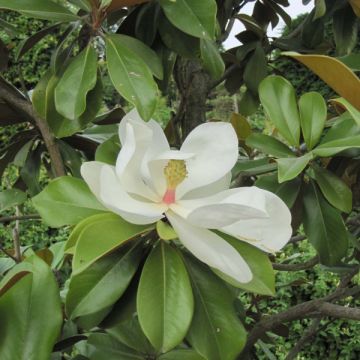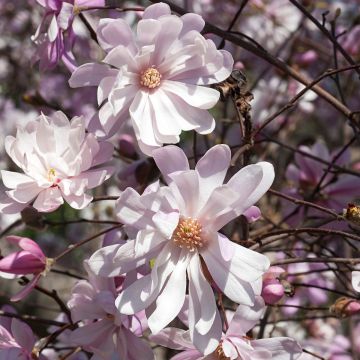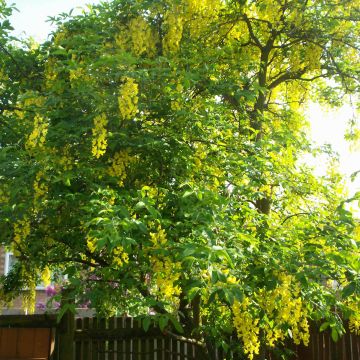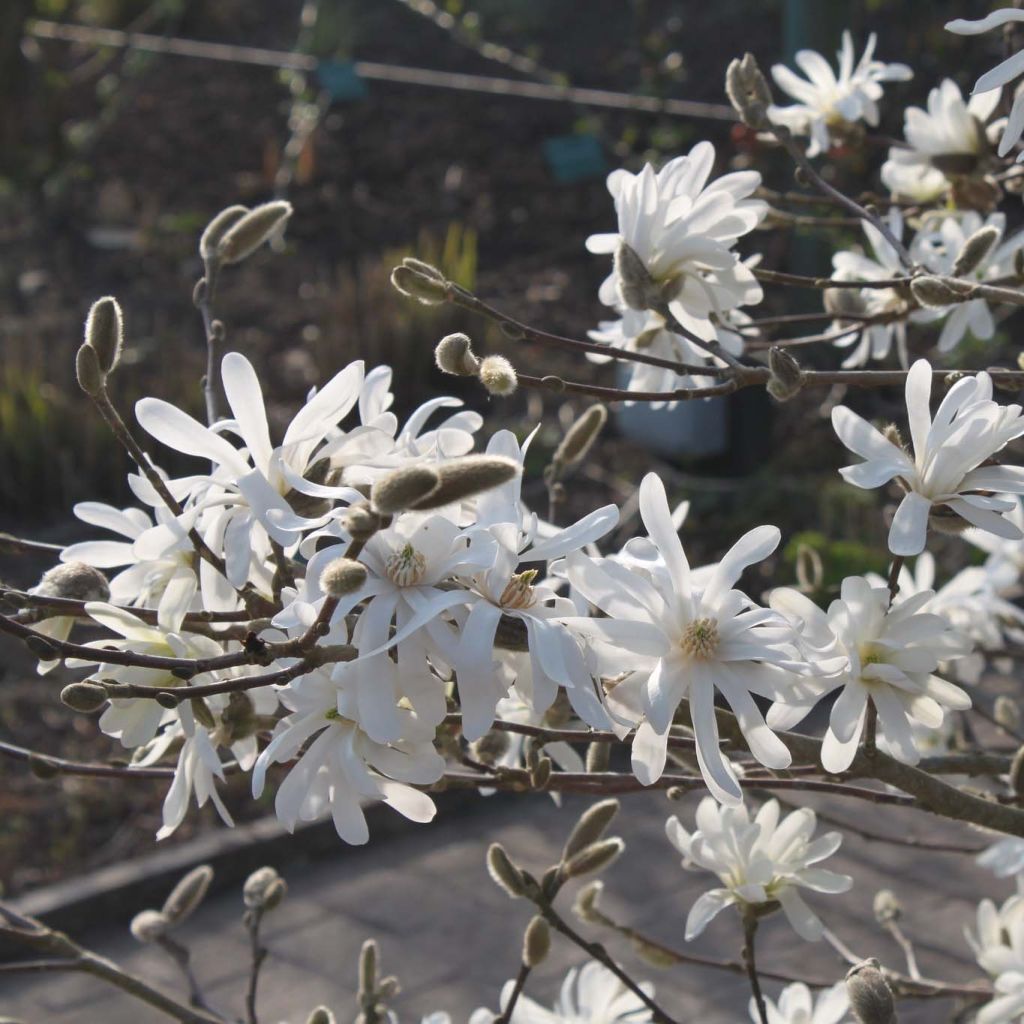

Magnolia stellata Waterlily
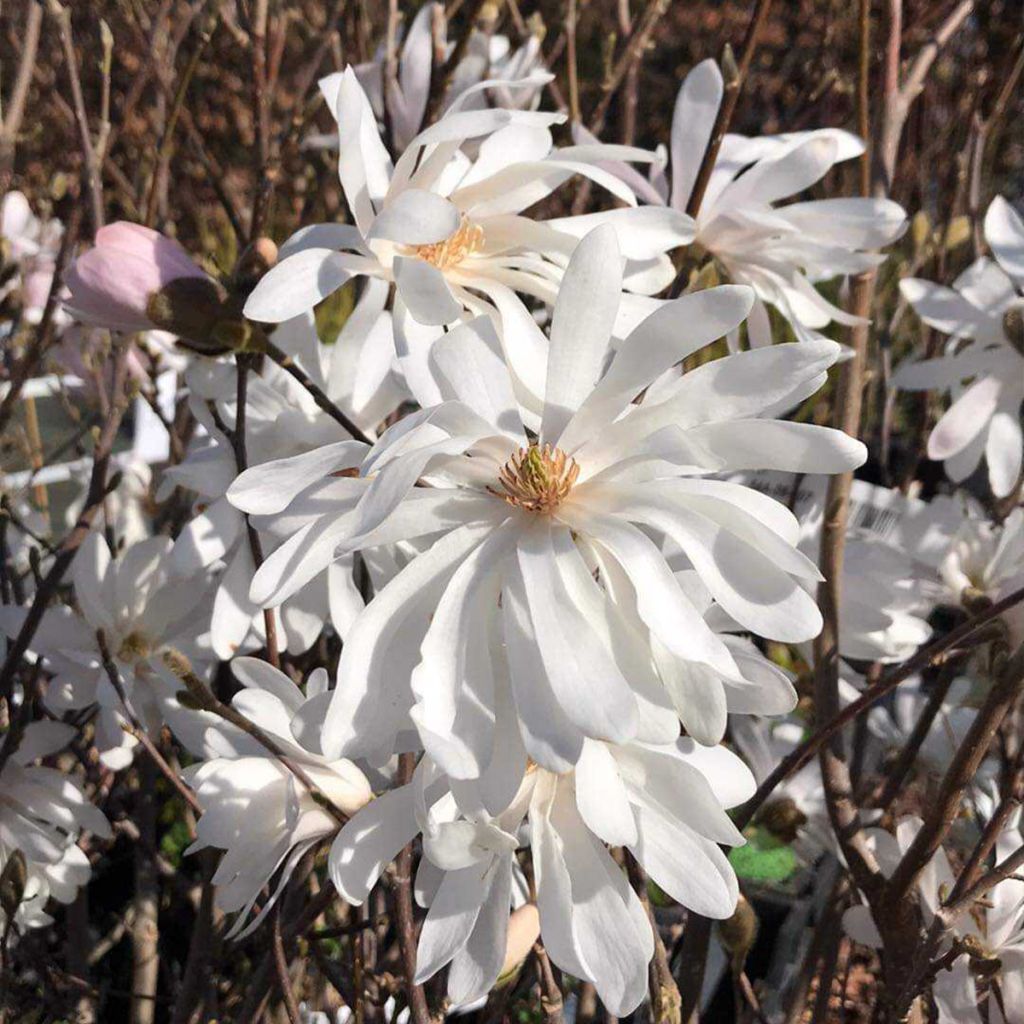

Magnolia stellata Waterlily


Magnolia stellata Waterlily


Magnolia stellata Waterlily
Magnolia stellata Waterlily
Magnolia stellata Waterlily
Star Magnolia, Starry Magnolia
This item cannot be shipped to the selected country
Delivery charge from €5.90
Delivery charge from €5.90
Delivery to Corse prohibited
More information
Schedule delivery date,
and select date in basket
This plant carries a 24 months recovery warranty
More information
We guarantee the quality of our plants for a full growing cycle, and will replace at our expense any plant that fails to recover under normal climatic and planting conditions.
From €5.90 for pickup delivery and €6.90 for home delivery
Express home delivery from €8.90.
From €5.90 for pickup delivery and €6.90 for home delivery
Express home delivery from €8.90.
Delivery to Corse prohibited: UE law prohibits the import of this plant from mainland France to Corse as part of the fight against Xylella fastidiosa. Please accept our sincere apologies.
More information

Does this plant fit my garden?
Set up your Plantfit profile →
Description
The Magnolia stellata 'Waterlily' owes its name to the appearance of its white flowers in large double stars, which can evoke those of water lilies. This superb variety of star magnolia is a true enchantment in early spring, when the bush is literally covered with softly scented flowers, before the foliage appears, from a young age. Compact, generous, and accommodating, 'Waterlily' is ideal for ornamenting small gardens, and it also grows very well in a large pot on the terrace or balcony.
The star magnolia, Latin name Magnolia stellata, originating from Japan, is the earliest and most floriferous species in the Magnolia genus. It is also one of the most adaptable to soil and climate, and the bush shows slow growth and moderate development. 'Waterlily' is a horticultural variety selected at Greenbrier Farms, Norfolk (US) around 1939. It is characterized by its very double flowers, increased floribundity, and a more compact habit.
The flowers of the 'Waterlily' star magnolia, measuring 10 to 12 cm (3.9 - 4.7 in) in diameter, composed of 15 to 18 white petals barely tinged with pink, cover the entire plant from March onwards, before the leaves emerge. The explosion of flowering is rapid and lasts for many weeks despite the cool temperatures. It also offers a fairly light and subtle fragrance with vanilla and lemon notes that do not fail to capture the attention of passers-by. Flowering occurs in young subjects from the age of 18 months. This beautiful bush has a bushy and spreading habit over time, but very branched, reaching 2 to 3 m (6 in 7 ft - 9 in 10 ft) in all directions. The leaves, 4 to 10 cm (1.6 - 3.9 in) long, develop once the flowering is finished. They are arranged alternately on the branches, simple and entire, oval-shaped, dark green with a paler underside. They turn yellow in winter before falling.
This 'Waterlily' star magnolia, an outstanding ornamental tree, will work wonders in a modest-sized garden, where it will quickly become the star of spring. It is a classic in white gardens. It is most often used as a solitary specimen in the middle of a lawn, where its remarkable flowering is most effective, but when installing it, remember that once the flowering is over, it will somewhat fade into anonymity. Therefore, it is advantageous to associate it with a mass of shrubs that prefer non-calcareous soils, with staggered flowering (Camellias, Hydrangeas, Witch Hazels, Pieris, Windflowers, Fothergilla, Wintersweet), for a Japanese-style garden. Just make sure not to plant other vegetation within 1.50 m (4 in 11 ft) of the trunk of the Magnolia, as its roots do not tolerate competition. It is also possible to create beautiful flowering hedges along paths, alternating this Magnolia with other cultivars (Magnolia grandiflora, Magnolia denudata, liliflora, brooklyniensis). Due to its small size and slow growth, the star magnolia is ideal in a potted container on a terrace where you can enjoy its pleasant vanilla fragrance.
History: Its name Magnolia was given to it in 1703 by Charles Plumier, botanist to King Louis XIV, thus paying homage to the physician-botanist Pierre Magnol (1638-1715), who was one of the directors of the Montpellier Botanical Garden at the end of the 17th century. Its specific name soulangeana originates from Etienne Soulange-Bodin (1774-1846), a retired cavalry officer from Napoleon's army, who devoted himself to horticulture. In his Fromont castle, near Paris, he became passionate about Magnolias and obtained this hybrid in 1829, the origin of a magnificent lineage of cultivars today!
Report an error about the product description
Magnolia stellata Waterlily in pictures




Plant habit
Flowering
Foliage
Botanical data
Magnolia
stellata
Waterlily
Magnoliaceae
Star Magnolia, Starry Magnolia
Cultivar or hybrid
Other Magnolia
Planting and care
Plant the Waterlily Magnolia stellata in a sunny, non-burning exposure (rather shaded in the south) or in partial shade, sheltered from the wind (this magnolia is hardy to about -15°C). Plant it in cool, acidic or neutral (even slightly chalky) soil, fairly firm, rich, and humus-rich. On dry soil, mulch to retain moisture. On chalky soil, dig a large planting hole and fill it with heath soil mixed with your garden soil, or choose to plant it in a container. The soil should always remain slightly moist, even in summer. Apply compost or slow-release organic fertilizer in autumn, or use fertilizer for flowering bushes in spring. This bush does not tolerate root competition, so make sure to maintain a planting distance of about 1m (3 in 4 ft).
Planting period
Intended location
Care
-
, onOrder confirmed
Reply from on Promesse de fleurs
Spring-flowering shrubs
Haven't found what you were looking for?
Hardiness is the lowest winter temperature a plant can endure without suffering serious damage or even dying. However, hardiness is affected by location (a sheltered area, such as a patio), protection (winter cover) and soil type (hardiness is improved by well-drained soil).

Photo Sharing Terms & Conditions
In order to encourage gardeners to interact and share their experiences, Promesse de fleurs offers various media enabling content to be uploaded onto its Site - in particular via the ‘Photo sharing’ module.
The User agrees to refrain from:
- Posting any content that is illegal, prejudicial, insulting, racist, inciteful to hatred, revisionist, contrary to public decency, that infringes on privacy or on the privacy rights of third parties, in particular the publicity rights of persons and goods, intellectual property rights, or the right to privacy.
- Submitting content on behalf of a third party;
- Impersonate the identity of a third party and/or publish any personal information about a third party;
In general, the User undertakes to refrain from any unethical behaviour.
All Content (in particular text, comments, files, images, photos, videos, creative works, etc.), which may be subject to property or intellectual property rights, image or other private rights, shall remain the property of the User, subject to the limited rights granted by the terms of the licence granted by Promesse de fleurs as stated below. Users are at liberty to publish or not to publish such Content on the Site, notably via the ‘Photo Sharing’ facility, and accept that this Content shall be made public and freely accessible, notably on the Internet.
Users further acknowledge, undertake to have ,and guarantee that they hold all necessary rights and permissions to publish such material on the Site, in particular with regard to the legislation in force pertaining to any privacy, property, intellectual property, image, or contractual rights, or rights of any other nature. By publishing such Content on the Site, Users acknowledge accepting full liability as publishers of the Content within the meaning of the law, and grant Promesse de fleurs, free of charge, an inclusive, worldwide licence for the said Content for the entire duration of its publication, including all reproduction, representation, up/downloading, displaying, performing, transmission, and storage rights.
Users also grant permission for their name to be linked to the Content and accept that this link may not always be made available.
By engaging in posting material, Users consent to their Content becoming automatically accessible on the Internet, in particular on other sites and/or blogs and/or web pages of the Promesse de fleurs site, including in particular social pages and the Promesse de fleurs catalogue.
Users may secure the removal of entrusted content free of charge by issuing a simple request via our contact form.
The flowering period indicated on our website applies to countries and regions located in USDA zone 8 (France, the United Kingdom, Ireland, the Netherlands, etc.)
It will vary according to where you live:
- In zones 9 to 10 (Italy, Spain, Greece, etc.), flowering will occur about 2 to 4 weeks earlier.
- In zones 6 to 7 (Germany, Poland, Slovenia, and lower mountainous regions), flowering will be delayed by 2 to 3 weeks.
- In zone 5 (Central Europe, Scandinavia), blooming will be delayed by 3 to 5 weeks.
In temperate climates, pruning of spring-flowering shrubs (forsythia, spireas, etc.) should be done just after flowering.
Pruning of summer-flowering shrubs (Indian Lilac, Perovskia, etc.) can be done in winter or spring.
In cold regions as well as with frost-sensitive plants, avoid pruning too early when severe frosts may still occur.
The planting period indicated on our website applies to countries and regions located in USDA zone 8 (France, United Kingdom, Ireland, Netherlands).
It will vary according to where you live:
- In Mediterranean zones (Marseille, Madrid, Milan, etc.), autumn and winter are the best planting periods.
- In continental zones (Strasbourg, Munich, Vienna, etc.), delay planting by 2 to 3 weeks in spring and bring it forward by 2 to 4 weeks in autumn.
- In mountainous regions (the Alps, Pyrenees, Carpathians, etc.), it is best to plant in late spring (May-June) or late summer (August-September).
The harvesting period indicated on our website applies to countries and regions in USDA zone 8 (France, England, Ireland, the Netherlands).
In colder areas (Scandinavia, Poland, Austria...) fruit and vegetable harvests are likely to be delayed by 3-4 weeks.
In warmer areas (Italy, Spain, Greece, etc.), harvesting will probably take place earlier, depending on weather conditions.
The sowing periods indicated on our website apply to countries and regions within USDA Zone 8 (France, UK, Ireland, Netherlands).
In colder areas (Scandinavia, Poland, Austria...), delay any outdoor sowing by 3-4 weeks, or sow under glass.
In warmer climes (Italy, Spain, Greece, etc.), bring outdoor sowing forward by a few weeks.

































